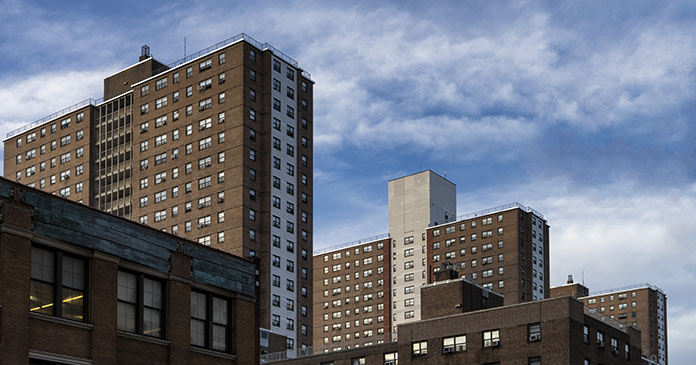A report issued by HUD in May drove home how few housing choices our poorest families have. It found that in 2007, nearly 13 million low-income individuals paid more than half their monthly income for rent, lived in severely substandard housing, or both. The report, issued to Congress on Tuesday, found that these “worst case housing needs” grew significantly during the previous administration, between 2001 and 2007—not coincidentally during a time when promoting home-ownership was the singular focus of national housing policy.
Already, the absence of a national strategy to preserve affordable housing has resulted in the loss of 150,000 affordable homes through demolition or sale in the last 15 years. Our Public Housing program alone has a backlog of unmet capital needs estimated at $20 to $30 billion.
Indeed, if we fail to act now, we will lose these irreplaceable resources forever.
That’s not the only challenge. With 13 different programs, each with its own rules, managed by three operating divisions with separate field staff, it does not take a housing expert to see that the patchwork of rules and regulations that families have to navigate today doesn’t make affordable housing more accessible—but less.
To the Obama Administration, failing to preserve these resources for the next generations is unacceptable. But just as clear is the fact that we need to do a better job for those generations—and that the Federal government can’t do the job alone.
That is why we have proposed the Preservation, Enhancement and Transformation of Rental Assistance Act.
This legislation not only reflects our best thinking at HUD—but also our best listening, incorporating the lessons we’ve learned from stakeholders from around the country about what it takes to build strong neighborhoods and give families the housing choices they need.
Three fundamental principles guide this legislation.
First, this bill would change the funding structure to leverage public and private capital and open public housing to retail businesses like grocery stores, schools and other community anchors—changing not who owns this housing or who is served by it, but rather, how it is financed.
What this bill won’t do is “privatize” public housing.
Neither President Obama nor I have any interest in risking such an important public resource or opening the door for others to do so.
By allowing public housing properties to voluntarily tap their inherent value to meet their capital needs like owners of other affordable housing are able to do, this legislation levels the playing field—increasing the likelihood that properties will remain publicly owned and affordable to the lowest-income households. And by maintaining the targeting and affordability requirements of the U.S. Housing Act and including an unprecedented combination of policies to protect tenants, it ensures this assistance will continue to be targeted to the neediest families.
Second: the complexity of HUD’s programs is part of the problem. Today, families are required to fill out dozens of applications processed by scores of administrators simply to have a decent chance of receiving the assistance they need.
This bill will allow us to merge other programs with our core Section 8 program, creating new opportunities for long-term property based contracts to preserve these units. And by creating a more coherent set of tenant rights and nondiscrimination and fair housing requirements, this legislation will ensure that our programs are fairer, easier for families to access, less costly to operate, and more efficiently administered.
The third principle of this legislation is to encourage resident choice—because residents should be able to choose where they live without fear of losing their rental assistance. Today, public housing and other programs lock in residents even if they need to move for a job or to address a family illness. Indeed, staying in substandard housing is the only option many families have to keep a roof over their heads. Even worse, they often find themselves trapped in neighborhoods of concentrated poverty because moving means giving up that assistance. That’s not right. This bill would allow us to provide portable vouchers to residents so they can move to another unit if needed, but also allow us to preserve the original unit for another vulnerable family.
And so, the goal of this proposal is simple: to put HUD-assisted rental housing on a strong foundation for decades to come—and put an end to the parallel system we have today in which most families live in housing that is financed, developed and managed through mechanisms that can be integrated with the communities around them, while the two-and-a-half million poor families served by HUD’s oldest programs live in another.
Over half a century ago, the Warren Court’s unanimous decision in Brown vs. Board of Education declared that “separate educational facilities are inherently unequal.”
I believe a separate housing system for low-income families is also inherently unequal.
The time has come to make public housing work for families—to complete this unfinished business of the Civil Rights movement and ensure that all families can live in sustainable, vibrant communities of opportunity and choice. That is what this legislation is about. And it’s what we have an opportunity to create—but only if we seize this unique moment in our history. The time to act is now.
Author: Shaun Donovan, HUD Secretary
















